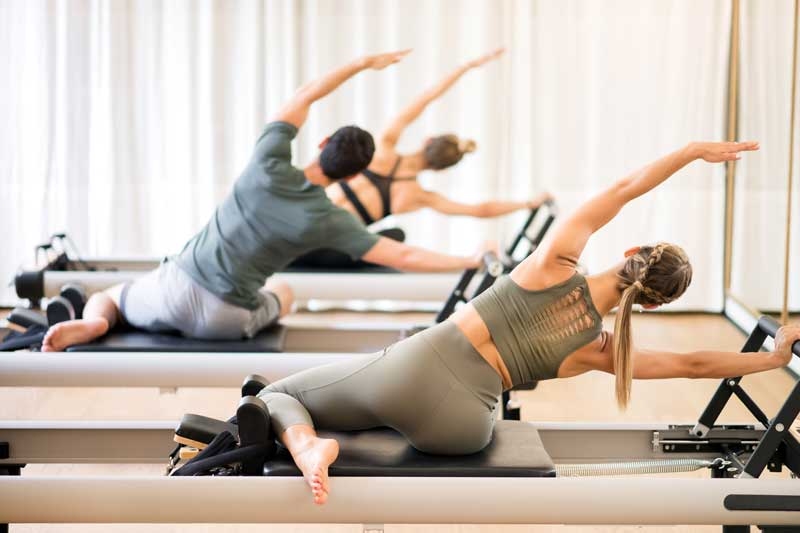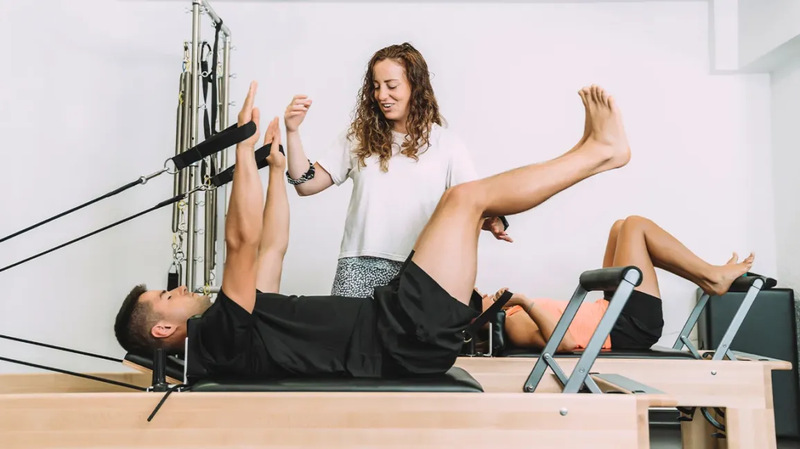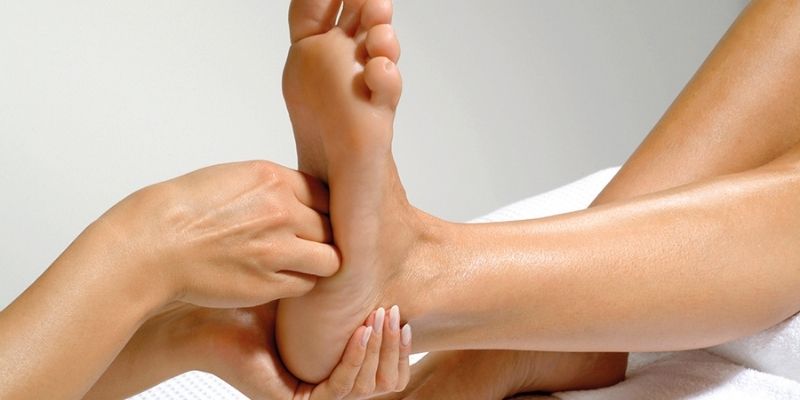Joseph Pilates developed Pilates in the early 20th century. This system focuses on the core muscles and promotes a mind-body connection. It's a low-impact exercise that enhances not only physical strength but also mental clarity. This is an accessible routine for individuals across all fitness levels, thus presenting itself as a versatile choice for those seeking balance and effectiveness in their workouts.
1. Essential Pilates Routines for Beginners
Newcomers initiate their Pilates practice by mastering foundational exercises such as the Hundred, Roll-Up, and Single-Leg Stretch. Performing The Hundred, a practice that pairs controlled breathing with arm and leg movements to activate core muscles, promotes stamina. Meanwhile, executing The Roll-Up enhances flexibility and core strength through its focus on spinal articulation. The Single-Leg Stretch hones in on the abdominal muscles, and fosters coordination, a crucial aspect of exercise. Beginners, in their gradual adaptation to this fundamental routine, not only establish the necessary foundation for more complex movements. They also nurture body awareness and control with each session.
To embark on your Pilates journey, you must exhibit patience and consistency. these are essential. As a beginner, once you've mastered the foundational exercises, it's time to introduce progressive challenges through varying techniques. Use props such as resistance bands or small Pilates balls for increased intensity and amplified workouts. Not only do these modifications keep the routines engaging, but they also contribute to a dynamic learning experience. Beginners can build their strength and flexibility at their own pace.
- Consideration: Start with shorter sessions initially, gradually increasing the duration to prevent muscle strain.
- Caution: Focus on proper form rather than intensity, ensuring a safe and effective practice.
2. Tailoring Pilates Workouts to Your Goals
With its diverse range of exercises, Pilates can be tailored to meet specific fitness objectives. For weight loss goals, incorporate dynamic and full-body movements, such as the Pilates Jump Board exercises. Moreover, emphasis on resistance training through Pilates reformer workouts is essential in muscle toning. Focus on exercises such as the Mermaid or Saw, which stretch and elongate muscles to enhance flexibility.

When you customize your Pilates sessions, understanding your body becomes paramount. Conduct a self-assessment. Identify areas of strength and weakness. This will allow for targeted exercises. Adopting this personalized approach guarantees not only effective results but also ensures that your fitness journey remains sustainable and enjoyable. Consider consulting a certified Pilates instructor when you tailor your Pilates workouts. A well-rounded routine that aligns with your goals and ensures optimal results, without compromising safety, is what their expertise can help you create.
- Consideration: Mix in Pilates mat exercises with equipment-based workouts for a comprehensive fitness routine.
- Caution: Gradually increase intensity to prevent overexertion and minimize the risk of injury.
3. Advanced Pilates Techniques to Elevate Your Practice
Your progressing Pilates journey necessitates the incorporation of advanced techniques for continued growth. Specifically, movements such as the Teaser and Swan Dive require heightened strength, flexibility, and control. The Teaser is a movement that challenges your entire core and necessitates precise coordination. The Swan Dive is an engagement with back muscles to foster spinal mobility are vital component in this process.
Introduce variations to advanced techniques to enhance your practice. Start by modifying the Teaser. Extend one leg at a time. Then progress gradually towards the full movement. To intensify the challenge, experiment with diverse arm positions during Swan Dive. Not only do these variations enhance the exercises' effectiveness, but they also avert monotony. Thus, maintaining an engaging and rewarding practice.
- Consideration: Prioritize proper breathing techniques during advanced movements to enhance oxygen flow and muscle engagement.
- Caution: Progress at your own pace, ensuring mastery of foundational movements before attempting advanced techniques.
4. Crafting Your Pilates Routine - A Holistic Approach
To create a comprehensive Pilates routine, you must diversify the exercises to specifically target different muscle groups. This includes incorporating arm, leg, and back-focused movements alongside core-centric ones. The use of either the Pilates Cadillac or Tower, which can harness spring resistance, proves instrumental in providing an effective full-body workout.
A balanced Pilates regimen promotes not only physical strength and flexibility but also improved posture and coordination. To engage stabilizing muscles and enhance overall body awareness, include exercises such as the Side Plank or Leg Pull Front. Adding variety by experimenting with different routines, like a combination of mat-based exercises along with equipment-based ones, offers new challenges to your body. Consider integrating mind-body elements to enhance the holistic nature of your Pilates routine further. Infuse moments of mindfulness. Consciously incorporate breathing exercises. Through this approach, you align the physical benefits inherent in Pilates with mental well-being, a truly comprehensive strategy.
- Consideration: Include a mix of Pilates exercises targeting both large and small muscle groups for comprehensive development.
- Caution: Pay attention to alignment and form, ensuring each movement is executed with precision to maximize effectiveness.
5. What to Avoid in Pilates Workouts and Routines?

To derive high benefits from engaging in Pilates, you must remain mindful of potential pitfalls for a safe and effective practice. Overreliance on momentum compromises the precision and control emphasized by Pilates. Thus, we should avoid this at all costs. Rapidly executing uncontrolled motions not only reduces exercise effectiveness but also heightens injury risks. Therefore, it’s imperative to maintain deliberate movement throughout your routine. Moreover, do not neglect your breath. Proper breathing in Pilates is essential for facilitating muscle engagement and elevating overall performance. Conversely, holding your breath during exercises can impede the oxygen flow to muscles, reducing their effectiveness and potentially causing strain.
In the realm of Pilates, it is vital to refrain from exerting excessive force on yourself. This caution applies particularly if you are a novice or contending with physical constraints. Comprehend your body's potential. Adapt exercises correspondingly. Overreaching or endeavoring advanced movements beyond your existing fitness level may precipitate injuries: be vigilant and progressive in all undertakings related to Pilates. Focus on the gradual progression of your Pilates practice. Meticulously heed signals from your body. This ensures a sustainable, injury-free routine.
- Caution: Avoid excessive reliance on external props, ensuring they enhance rather than compromise proper form.
- Consideration: Take breaks between sessions to allow your body to recover, preventing burnout and supporting long-term commitment to Pilates.
Conclusion
To conclude, Pilates surpasses conventional exercise methods by providing a holistic fitness approach. Integrating its routines and workouts into your regimen unveils a pathway toward improved strength, flexibility, and mental well-being. The versatility of Pilates renders it an invaluable asset for novices as well as experienced practitioners on their respective fitness journeys. Embrace Pilates's transformative power. Observe the positive changes it imparts to your body and mind.







